
The seventh BMC Ecology Image Competition received a number of stunning collections of photographs from ecologists around the world, demonstrating their talents in presenting their research, using photography to highlight their work. Anyone affiliated with a research institute was able to enter and we were amazed by both the quality and variety of submissions.
As always, our BMC Ecology Section Editors lent their expertise to judge the many entrants to the competition, selecting the best images from their area of research as well as the overall winner. Our accompanying editorial gives more information about the winning images, the stories behind them and why they were picked. This also includes a selection of 7 highly commended images; there are some really great photos so please do take a look!
Here are our winning images:
Overall winner:
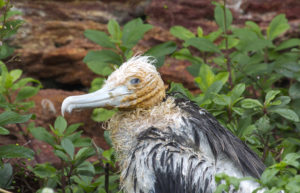
Our overall winning image was taken by David Costantini from the Muséum National d’Histoire Naturelle, Paris, France. Viruses are a significant ecological concern because they are responsible for a variety of pathological effects in wildlife. This photograph is of a magnificent frigatebird (Fregata magnificens) chick, suffering from a viral infection from which, unfortunately, it isn’t likely to recover.
Runner up:
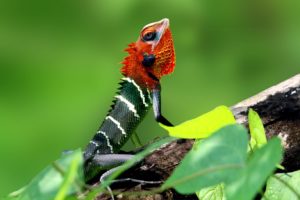
Our runner up, in sharp contrast to our overall winner, is an image showcasing the vibrant colors of a forest green lizard (Calotes calotes). Dr S S Suresh from the Ibri Regional Referral Hospital in Oman captured this stunning photograph after spotting a pair of the iguanian lizards in their breeding plumage.
Behavioral and Physiological Ecology
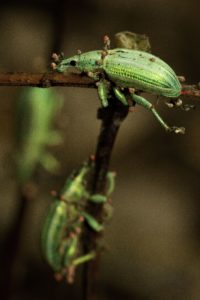
Our winner in this category, taken by Damien Esquerré from the Australian National University, is entitled “Zombie fungus” and with good reason. The unfortunate weevil shown has been infected by Cordyceps, a fungus that infects insects, controls their behavior and then kills them.
Community, population and macro-ecology
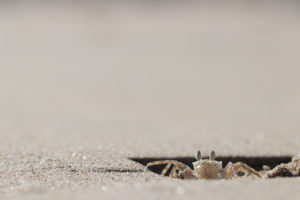
This delightful winning image was captured by HaoYun Zhuang from Fuzhou University. This is a ghost crab, hiding in a human footprint on a beach in China. These animals are usually pale in color, blending into the sand, and can move very quickly to escape from predators.
Conservation Ecology and Biodiversity Research
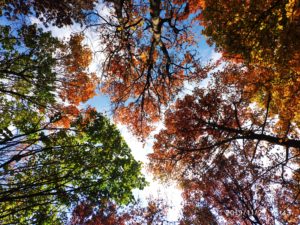
Our winner in this category was an entry by Zu-Chang Xu from the Chinese Academy of Sciences. It demonstrates a phenomenon called “crown shyness”, whereby the crowns of fully stocked trees do not touch each other, resulting in a canopy with channel-like gaps.
Landscape Ecology and Ecosystems

Kang Xu, who is from the College of Life Sciences, Zhejiang University is our winner in this category, submitting a stunning image of a wind farm in China’s Gobi Desert.
Editors pick
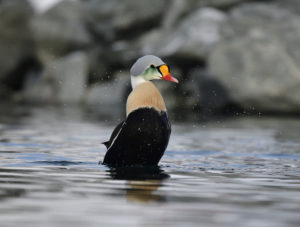
My choice as the Editor is entitled “The Kings Bath” and it was captured by Nayden Chakarov from Bielefeld University, Germany. It’s a cheerful photo of a duck having a wash.
Congratulations to all of our winners! Their images, along with our highly commended entries, have been released under a Creative Commons Attribution License (CC BY), so everyone is welcome and encouraged to share them freely, as long as you clearly attribute the image author.
Comments